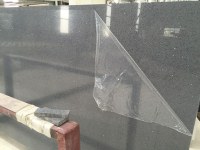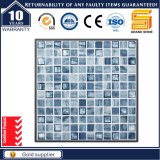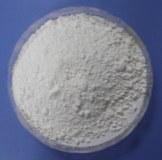Immunohistochemistry Stainer
The AMOS ihc autostainer is a state-of-the-art instrument designed for precise and automated staining of tissue slides in immunohistochemistry procedures. It offers programmable staining protocols and adjustable parameters to ensure consistent and reproducible results. The stainer accommodates multiple slides and provides efficient and reliable staining for research, diagnostics, and educational applications. The AMOS Immunohistochemistry Stainer is available for sale, providing a reliable and efficient solution for immunohistochemistry staining in the laboratory.
Principles Behind the Immunohistochemistry Staining Process Performed by an Immunohistochemistry Stainer
Immunohistochemistry staining is a widely used technique in the field of pathology and research to detect specific proteins or antigens within tissue samples. The immunohistochemistry staining process involves several key principles that are facilitated by an immunohistochemistry stainer.
Firstly, the process starts with sample preparation, where tissue sections are prepared and mounted onto glass slides. These slides are then subjected to a series of pre-analytical steps such as fixation, antigen retrieval, and blocking to ensure optimal antigen preservation and minimize nonspecific binding.
Next, the primary antibody is applied to the tissue section. The primary antibody recognizes and binds to the target antigen of interest. This primary antibody is typically raised against a specific protein and is conjugated to a detection system, such as an enzyme or fluorescent dye.
After incubation with the primary antibody, the tissue section is washed to remove any unbound primary antibody. This is followed by the application of a secondary antibody, which is specific to the primary antibody species. The secondary antibody recognizes and binds to the primary antibody, amplifying the signal.
The detection system of the secondary antibody then reacts with a substrate, producing a visible signal. Enzymes such as horseradish peroxidase (HRP) catalyze a colorimetric reaction, leading to the formation of a colored precipitate. Fluorescent dyes emit fluorescence upon excitation, allowing for visualization under a fluorescence microscope.
Finally, the tissue section is counterstained with a dye, such as hematoxylin, to highlight cellular structures and provide context to the immunohistochemical staining.
An immunohistochemistry stainer automates and standardizes these steps, ensuring consistency and reproducibility. It accurately controls various parameters such as incubation time, temperature, and reagent volumes, resulting in precise and reliable immunohistochemical staining.
Advantages of Using an Automated Immunohistochemistry Stainer
1. Increased Efficiency: Automated immunohistochemistry stainers significantly reduce hands-on time and labor. They can process multiple slides simultaneously, resulting in increased throughput and faster turnaround times. This allows laboratories to handle a larger volume of samples, improving workflow efficiency and reducing overall processing time.
2. Standardization and Reproducibility: Automation ensures consistent and reproducible staining results. By precisely controlling parameters such as incubation time, temperature, and reagent volumes, automated stainers eliminate variations introduced by manual handling. This leads to more reliable and accurate staining, facilitating inter-laboratory and intra-laboratory comparability.
3. Enhanced Quality Control: An automated immunohistochemistry stainer incorporates built-in quality control mechanisms. These systems monitor and validate key parameters, such as reagent expiration dates, temperature, and slide barcode identification, ensuring the reliability and accuracy of results. Moreover, automated stainers can produce audit trails, allowing for traceability and accountability within the staining process.
4. Adaptability and Flexibility: Modern automated immunohistochemistry stainers offer a wide range of customizable staining protocols. They can accommodate different tissue types, antibody cocktails, and detection systems, allowing for greater flexibility in experimental designs. This versatility is particularly beneficial when performing multiplex or double-labeling immunohistochemistry studies, where multiple antigens need to be visualized simultaneously.
5. User-Friendly Interface: Automated immunohistochemistry stainers often come equipped with user-friendly interfaces, guiding technicians through the staining process step-by-step. This reduces the likelihood of human error and minimizes the need for extensive training. Additionally, automated stainers may integrate with laboratory information management systems (LIMS), streamlining data management and result annotation.
Overall, the use of an automated immunohistochemistry stainer offers increased efficiency, standardization, quality control, flexibility, and user-friendliness, making it a valuable tool for reliable and high-throughput immunohistochemical staining.
For more information about histopathology apparatus, please feel free to contact us!
Personne à contacter : AMOS AMOS, +61 4 10 19 01 88
Bonne affaire : acheter au vendeur
Nous vous invitons à lire nos conditions générales d'utilisations. Vous pouvez aussi vous rendre sur nos FAQ et consulter notre page d'informations sur les risques liés à la contrefaçon.
|
Cette page concerne les importateurs et exportateurs de Immunohistochemistry Stainer Rechercher dans la catégorie : Maroquinerie / Bagagerie Rechercher dans la catégorie : stainer, immunohistochemistry |
Friday 15 July 2016
Prix : 43.5usd/Sqm
Today, there are many materials that you can choose for kitchen counter tops and bathroom vanity tops. And most of you choose Quartz Stone. Why? Simply because it ranks on top of the “Material Used for Kitchen Top”? Not really! When people love something, they love it for a reason, or reasons...
Sio stone Quartz Surfaces Co.,Ltd
- 528000 - Foshan
- 82584141
- +13 7 02 56 85 74
Tuesday 16 August 2016
Matte Mix Glossily Crystal Mosaic for Wall MM6001 Product Description material glass chip size 25 X 25mm sheet size 300*300 Thickness 6mm Surface Glossy Mounted mesh mounted Common Packing 11sheets/carton Package Material Paper carton with plywood pallet MOQ 100SQM...
Guangdong Grand Shine Construction Material Co., Ltd.
- 510000 - GuandZhou
- 86 20 38819128
Tuesday 05 July 2016
Properties: Light yellow powder with light bitter taste. Specific density is 1.65--1.72. Hardly soluble in acetone, benzene, ethanol, and carbon tetrachloride. Insoluble in water, gasoline. Decomposed in strong acid and alkali. Application: Used for NR, IR, SBR, NBR, EPDM and latex...
Zhengzhou Double Vigour Chemical Product Co.,ltd
- 450000 - Henan
- +8618336072376
Paiement sécurisé









